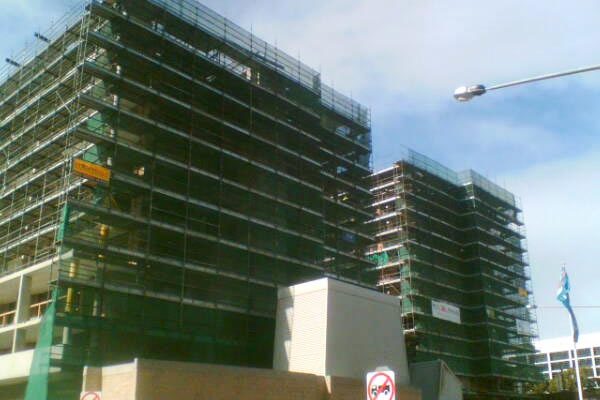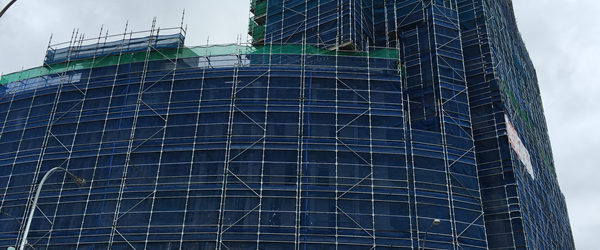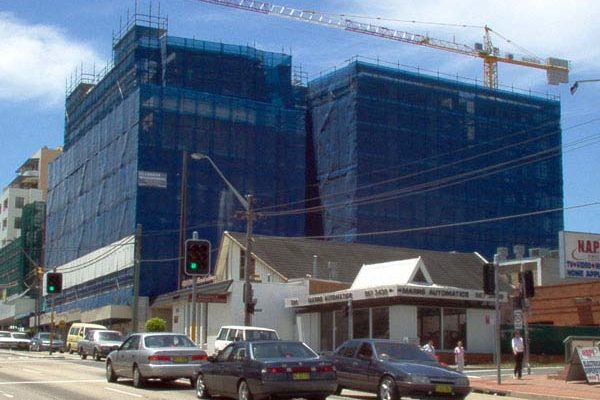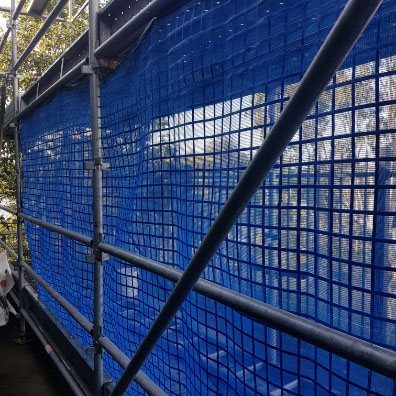Lyta Mesh
Installation
Lyta Mesh
Installation
Lyta Mesh is designed to be installed using structurally rated steel wire (OD 1.4 mm for steel fixing), cable ties or steel spring clips to fix the mesh onto standards, handrail ledgers and knee rail ledgers. Kickboards must be incorporated with Lyta Mesh.
Normally and preferably, Lyta Mesh will be located inside the kickboard. Each tie shall approximately carry a sustaining force of at least 300N.


Examination must be made of Lyta Mesh before each re-use. If there are any defects, deterioration or debris attached to the Lyta Mesh which give rise to doubt about the recommended performance, then either testing, repairs or cleaning must be carried out before the Lyta Mesh is put back into service or destroyed.
Please ensure that all tags attached to Lyta Mesh indicating date of manufacture, in service dates, Safety Codes and Instructions for Use are in place before using on site.
It is recommended that a strength assurance testing session should be carried out for any purchased batch of Lyta Mesh after 20 months of service life. This means after 24 months from the first in service date (from the marking of the month and year on the “in service record tag” (marking to be made by using a knife or other sharp tools). It does not matter if the mesh was continuously on site in service, or intermittently in service, the users should send at least 3 samples, each from separate rolls, for strength testing.
The manufacturer will offer free testing (purchaser to be responsible for freight to and from testing laboratory in Sydney) for Lyta Mesh that has been in service after 20 months from the first time in service, as indicated by the marking on the tag. A test report will advise the remaining strength against the regulatory threshold, or criteria (e.g. 1.9KN breaking force) and the likely remaining in-service life.
The purchaser should punch a hole or a dent in the month and year on the tag for the ending month and year of in-service life.
At the end of the suggested in-service life of Lyta Mesh, it is the purchaser’s responsibility to withdraw the Lyta Mesh from service for falling objects control measures. It could then be used for non-structural infill of temporary edge protection, as to AS/NZS 4994.1995.


The tested wind drag coefficient of Lyta Mesh is 1.15 for 0 degrees of wind direction to the building. However, the suggestion for users is to use 1.3 when estimating the wind action on the scaffold and building structure.
All repairs undertaken should not be detrimental to the strength or impede the performance of the Lyta Mesh. Repairs should only be carried out using materials that are compatible with the original Lyta Mesh.
Lyta Mesh is one of the most innovative netting products in the market , with an emphasis on quality, durability and value. We are proud to be associated with a product that provides a leading edge in technology.